Gorkha - after the earthquake
All words and photos by Anthea Fisher, Adventure Consultants Everest Basecamp Manager
With the 2016 Everest season successfully behind me I headed off to Western Nepal, not quite ready to brave the early winter cold in NZ and determined to see a little more of Nepal.
The last two years had seen me travelling through the stunningly beautiful Khumbu valley in the Everest region but I was curious as to what other parts of this country had to offer, and particularly how other, less visited regions were faring in the aftermath of the devastating 2015 earthquake.
I was fortunate enough to know the right people and quickly fell in with the right crowd, KarmaFlights, a small local NGO based out of Pokhara.
It had been less than a week since I’d left the Khumbu and I found myself bounced around in the back of a jeep, on my way to Gorhka, the epicentre of last years earthquake.
Save
The road quickly deteriorated and what had been promised to be a couple of days driving around visiting villages turned into a hot, sweaty, humid, pre- monsoon multi-day hike.
The hot sun reflecting off tin roof tops fill the valleys, contrasting brightly against the vivid green vegetation that had started to flourish in the early season rains. Monkeys swung from the trees along our path, cheekily following us and our brightly coloured umbrellas for a short while before quickly losing interest.
On arriving in these villages it wasn’t initially obvious to me what the impact of the earthquake had really been, they just looked poor. Later I was to see pictures, taken immediately after the quake, the village literally a pile of rubble. Every single house was destroyed in this village, and the next and the next. And while one year on most of the piles of rubble had been cleared they are all still living in temporary shelters and walking long distances for clean drinking water.
I soon realised that those shiny tin roofs I saw on the walk in told a story and that each piece of tin is a symbol of loss. Each a roof of a temporary shelter, usually a very basic one room dwelling made out of salvaged timber and a piece of tin distributed by aid agencies. There are still a number of tents, also donated by aid agencies, but mostly abandoned due to the heat and the tendency for the ground to turn to mud with the rain.
Just how long they will live in these shelters, who really knows.
In these villages we met with many teachers and community leaders. Our priority was to determine which young children needed the most help and to establish scholarships for them.
We took their photos and heard their stories. Each child had a sad story, yet still a smile for us. Many had lost their parents, brothers, sisters, entire families in the earthquake, as well as their homes and all their possessions. They were now living with grandparents or friends who are unable to afford the basic items for them to attend school. Simple things like shoes, pencils, backpacks, notebooks had all been lost in the earthquake, everything had been lost. In addition to the lack of resources these young children often spend their days helping with farm and household chores rather than attending school.
In conversations with the community leaders I was impressed by their commitment to education. It was reinforced in every village, the people didn’t care if they had to live in temporary shelters for the next ten years (which is a very real prospect for these remote communities), what they wanted more than anything else was education for the children.
Large numbers of local and international NGOs have been working hard to get schools built and to move students out of temporary class rooms that are inappropriate in the extremes of heat, rain and cold. One of the teachers showed me the heat rash some of her pre school children had developed from the intense heat coming through the rudimentary tin roof. The sad irony that exists for in 6 months from now these children will shiver under that same roof.
Reconstruction of school and houses is dependant not only on having the funds available but also government approval. A government that is notorious for frequent leadership changes, corruption and general mismanagement of local and international funds.
Not many tourists come through Gorkha. It’s not on a vibrant, bustling trekking route and it certainly doesn’t have the luxury of coffee shops and tea houses. The hardships that these resilient, yet suffering people face is tucked away from the groups of tourists and trekkers that have returned undaunted and intrepidly back to Nepal.
Life seems to be getting back to normal in some parts of Nepal yet it’s hard to see when, or even if, life will get back to normal for these more remote communities.

Donate directly to KarmaFlights through The CloudBase Foundation website at www.karmaflights.org
Or contact KarmaFlights directly to sponsor a child for $1 per day.

 Save
Save
Save
Save
Save
Save
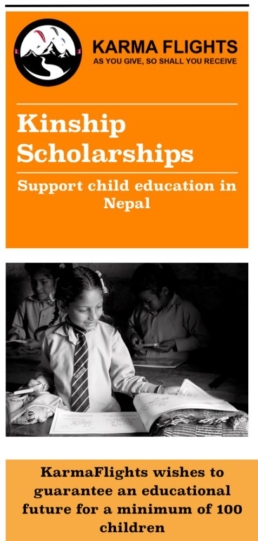
Save
Save
1 Comment
Add comment Cancel reply
This site uses Akismet to reduce spam. Learn how your comment data is processed.

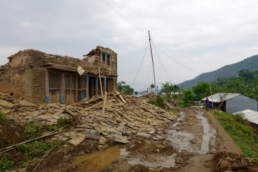
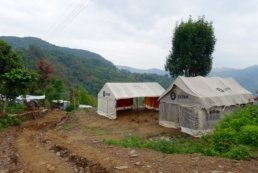
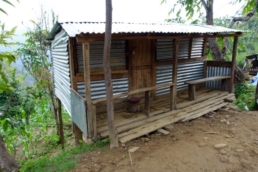
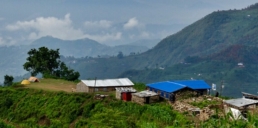
Thank you for your kind words about KarmaFlights work here Anthea! We appreciate so much your time, energy and support, of these vital development and education programs.